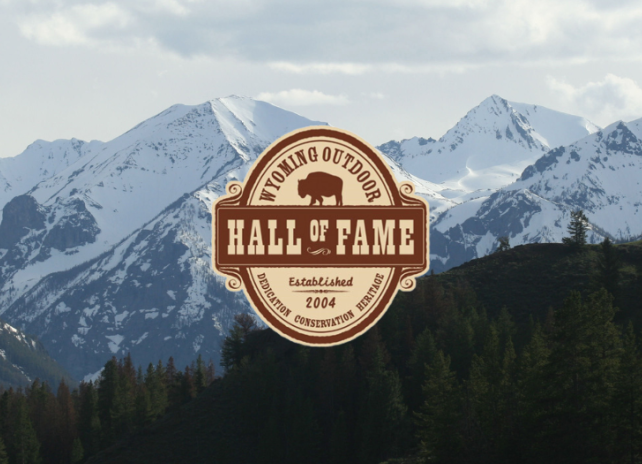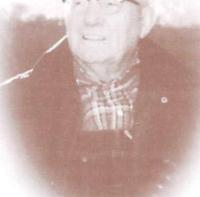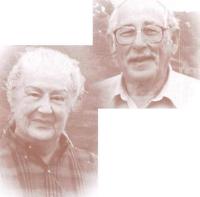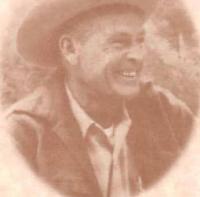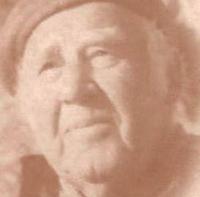Frank Cooper Craighead, Jr. and John Johnson Craighead were born in Washington, D.C. on August 14, 1916. Their parents were Dr. Frank C. Craighead, Sr. and Carolyn Johnson Craighead. Frank, Sr. was a forest entomologist working for the Department of Agriculture, and Carolyn was a biologist technician. As youths, the boys developed a keen fascination with falconry, helping to pioneer the sport in the United States and honing what would become their lifelong interest in wildlife conservation. In the summer of 1934, just after high school, Frank and John drove west in a 1928 Chevrolet with several of their friends, photographing and capturing hawks and falcons. They drove on dirt roads all the way, pulling over at night to camp. During this trip, they first saw Jackson Hole and visited with world renowned naturalists Olaus and Mardy Murie. The spectacular beauty of Wyoming remained with them through subsequent travels, and they promised themselves they would return someday to live near the Tetons. Parts of this trip were described in their first magazine article, “Adventures with Birds of Prey,” penned for National Geographic Magazine in 1937.
Frank and John graduated with A.B. degrees in Science in 1939 from Pennsylvania State University, where they both excelled on the wrestling team. They went on to the University of Michigan for M.S. degrees in Ecology and Wildlife Management in 1940. That same year, an Indian Prince named K.S. "Bapa" Dharmakumarsinjhi read their falconry article in the National Geographic Magazine and invited them to visit him in India. They wrote another National Geographic article and made a film about this visit, both titled, " Life With an Indian Price." These were the last days of the rule of Maharajahs in India, and the last days of Indian falconry on a grand scale .
With the outbreak of World War II, the brothers organized and conducted an outdoor living course for training military pre-inductees. Frank and John were commissioned as Lieutenants in the U.S. Naval Reserve Aviation Training Program and stationed in Pensacola, Florida. The Navy had taken keen interest in the brothers' outdoor skills course at the university, and as naval officer they were thus tasked with the unique assignment of pioneering survey techniques for military aviators and other personnel in the South Pacific. One outcome of this service was publication of their oft-reprinted Navy manual, "How to Survive on Land and Sea." While on a short military leave, Frank took a train to Illinois and married Escher Stevens.
After their wartime service, the brothers returned to Jackson Hole, where they bought 14 acres of land from John Moulton on Antelope Flats near Moose. They also completed their Ph.D studies at the University of Michigan. John Craighead married Margaret Smith and the two couples built identical cabins on their property in Moose and began families.
Frank and John went their separate ways in the early 1950, when John accepted a permanent position with the University of Montana.
John spent most of his subsequent career at the University of Montana, serving for many years as the leader of the Cooperative Wildlife Research Unit there. Similarly, Frank served in several li:de ral and academic positions and in 1955 formed the nonprofit Outdoor Recreation Institute. In 1959, Frank and John careers merged again. At the request of Yellowstone National Park, they began a 12-year study of grizzly bears. One of their greatest contribution to this study, and to the science of wildlife ecology, was their leadership in developing and using radio transmitters.
If there is one recurring theme in the lives of these remarkable individuals, it is the fact that these brothers repeatedly pioneered so many frontiers, from falconry to wildlife cinematography and immobilization, radio and satellite telemetry, and large scale satellite mapping of habitats. Perpetuating their legacy, many of the Craigheads' students, co-researchers, and children went on to pioneer the ir own new frontiers in science with other wildlife: species including mountain lions, wolverines, Arctic grizzlies, Alaskan brown bear, and peregrine falcons, among many others.
Although Frank and John retired in the mid- l980s, neither ever gave up their lifelong devotion to outdoor recreation, scientific research, and interpretation of the natural world. At age 89, John continues to remain as active as possible, fishing, writing, and organizing a life's worth of paper, files, photographs and artifacts.
